When you order a draft beer, your first impression is a visual one. A Hazy IPA, like the name implies, has a cloudy appearance, one you can’t see through like you might with other beer styles (think a light-bodied pilsner or even our Pale Ale).
But a Hazy IPA is far more than looks. Its foggy appearance hints at a fullness of flavor, which it delivers. The careful planning of malt and hops, along with less filtering before packaging, yields a beer with lower perceived bitterness than other IPAs and hop character that’s decidedly fruity—you’ll often hear “juicy” as a flavor descriptor, like a tasty bite of ripe citrus. With our Hazy Little Thing IPA, you might pick up notes of orange and pineapple. That’s all hops; we don’t brew Hazy Little Thing with any real fruit.
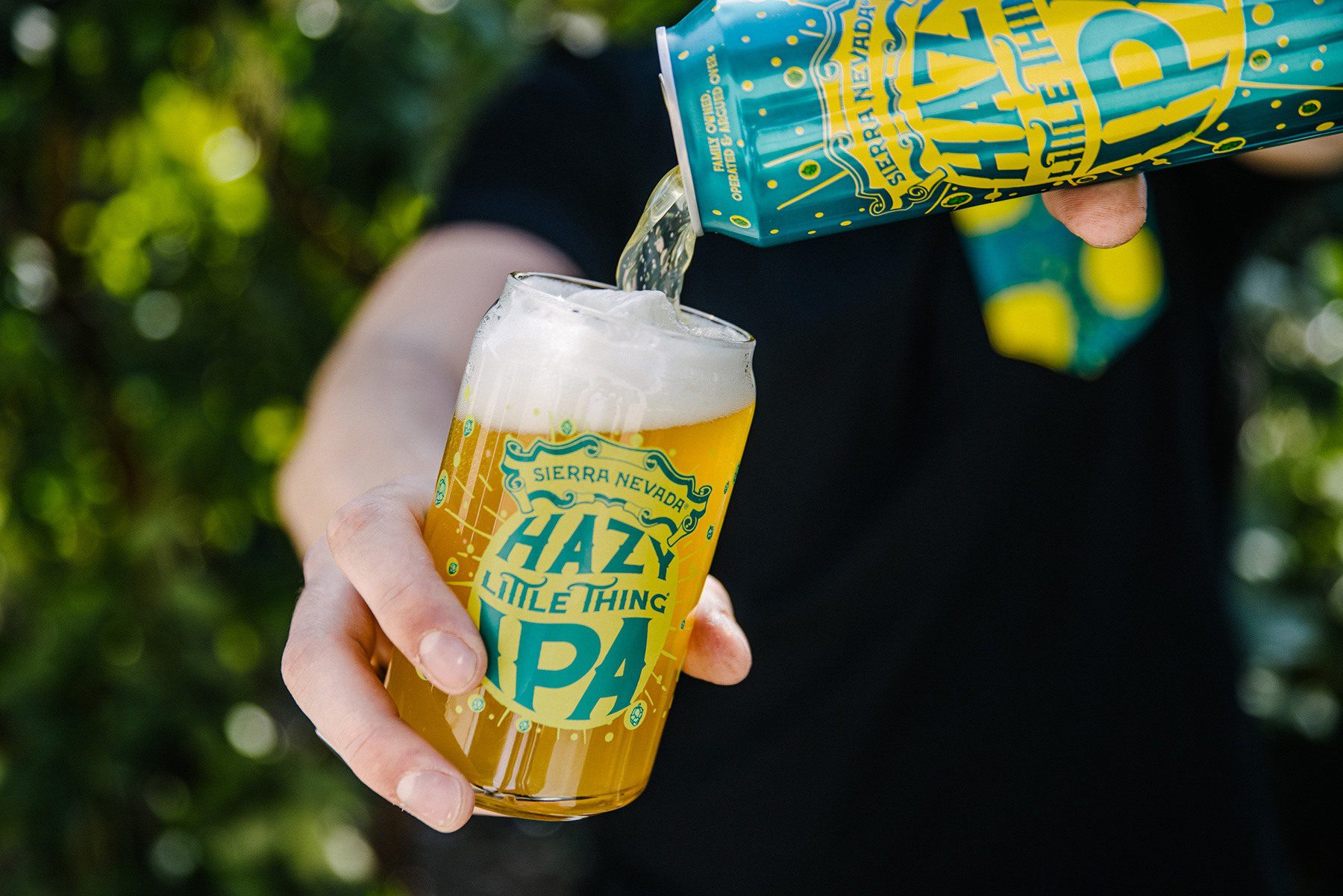
While other craft beer styles might seem like an acquired taste—the assertive bitterness of a West Coast IPA, the richness of an Imperial Stout—the popularity of Hazy IPA suggests it’s a crowd pleaser. Not to say it’s superior by any means, but Hazy IPA is a welcoming style within craft beer.
Hazy IPAs vs IPAs
Today, India Pale Ale (IPA) has a fairly broad interpretation, with substyles pushing the boundaries of alcohol content, using unexpected ingredients, or experimenting with process. But at the core, IPA shines the spotlight on unique aromas and flavors only hops can accomplish.
The origins of IPA are several centuries old, with English brewers traditionally making IPAs with more pronounced malt character and a certain subtlety to hop aroma and flavor. American craft brewers, on the other hand, have really leaned into hop intensity. For decades now, we at Sierra Nevada have been at the forefront of hop exploration.
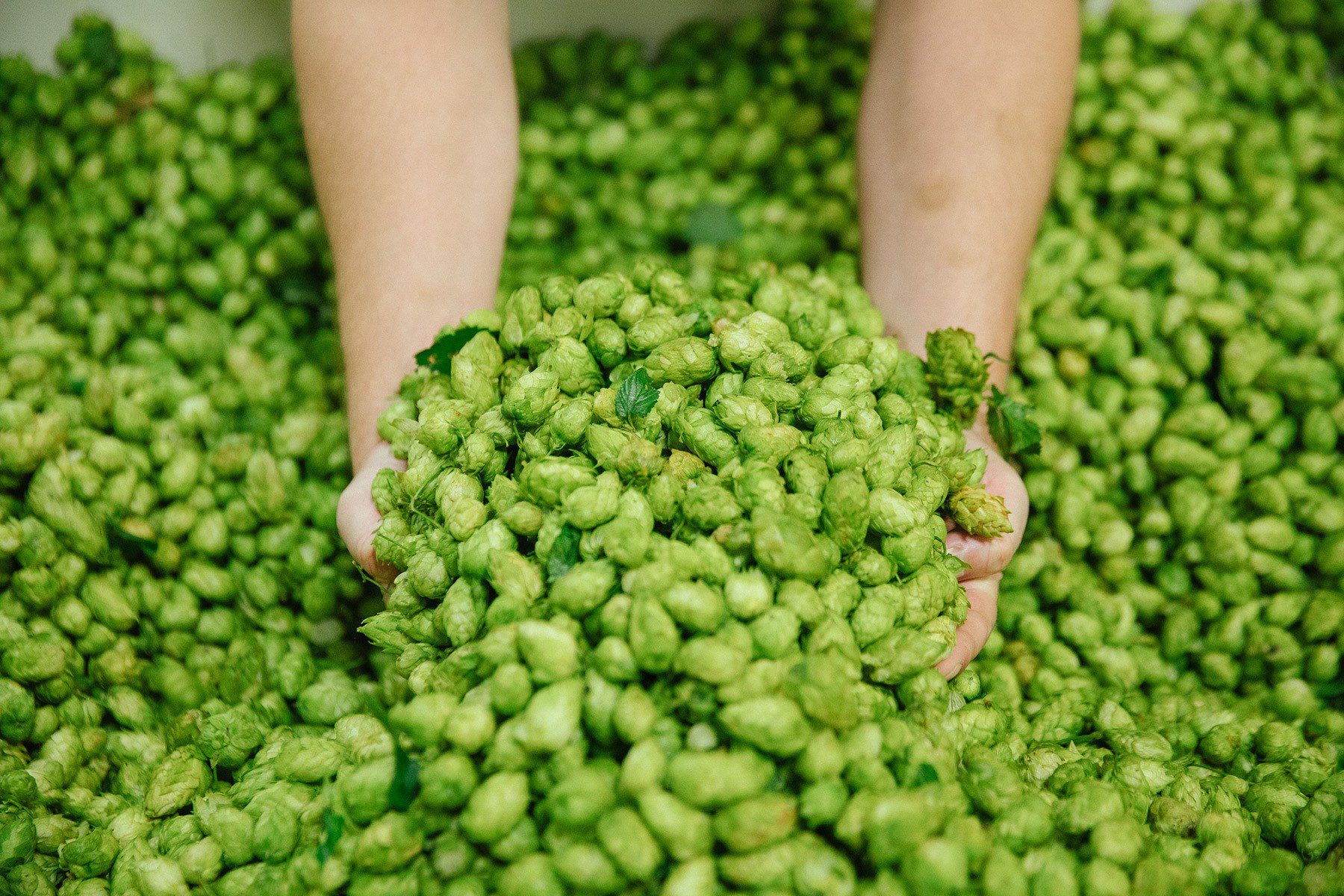
In 1981, our Celebration IPA reimagined winter beers, using the first hops from the annual harvest to create a medley of citrus, pine, and floral flavors. Bigfoot Barleywine came soon after, and while not an IPA, its sheer hop intensity rivals most any monster IPA. And for more than a decade now, Torpedo Extra IPA has grown an allegiance for its explosive aroma, the result of dry-hopping with our custom-built “Hop Torpedo,” a device that pushes hops to their limit.
More recently, we’ve had fun exploring the realm of Hazy IPA, mixing and matching newer hop varieties to invoke familiar fruits: mango, passion fruit, pineapple, tangerine—the whole farmers market, really. Hazy Little Thing IPA clocks in at 6.7% ABV and is silky smooth, and Summer Break is a Session Hazy IPA with an easy 4.6% ABV for those long days of sunny play.
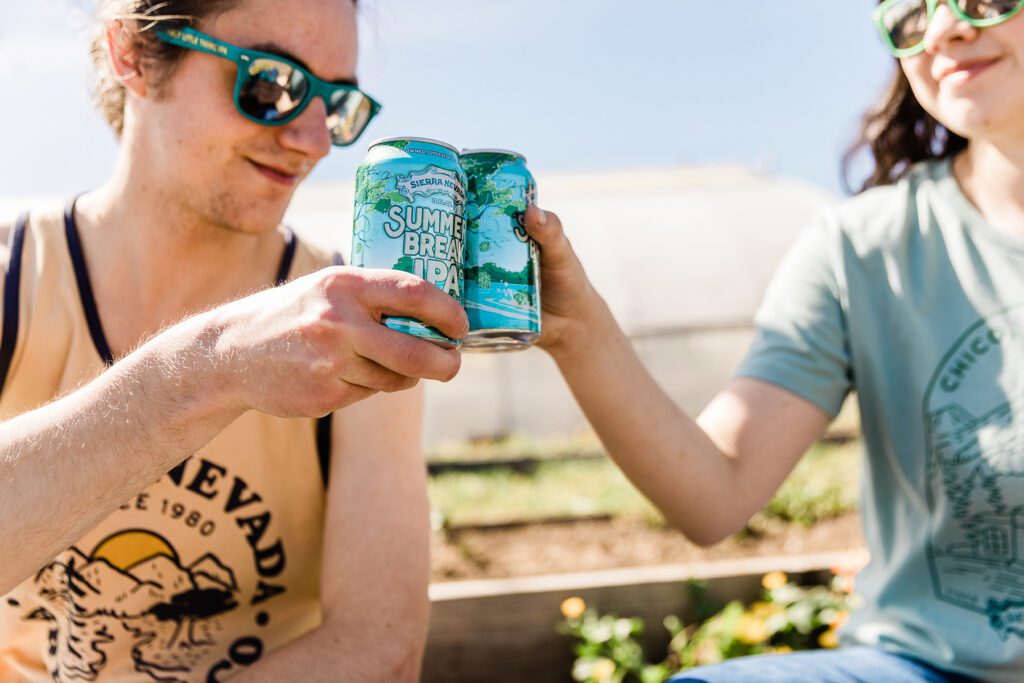
Hazy Pale Ale vs. Hazy IPA
Relative to Hazy IPA, the Hazy Pale Ale remains fairly obscure. And at a glance they’re similar, both sporting the signature cloudy glow and juicy hop character. Hazy Pale Ales, though, trend lower in ABV—say, mid-4% through 6%—and their bitterness may be even more restrained than Hazy IPAs. Drinkability outweighs intensity with Hazy Pale Ale, so while their hop flavor is vibrant—citrus, pine, tropical fruit—they land softer, more sessionable. Whether you go full force with Hazy IPA or downshift to Hazy Pale Ale, juicy hops headline these velvety smooth and approachable styles.
What does a Hazy IPA taste like?
With countless Hazy IPAs on store shelves, it’s no surprise their taste can vary greatly. But to narrow down what to expect, one helpful comparison is West Coast IPA vs. New England IPA, another name for Hazy IPA.
West Coast IPA vs Hazy IPA
The West Coast IPA typically showcases aromas of citrus and pine, and perhaps additional fruity character, with an emphasis on creating a clean yet assertive bitterness. Hops are front-loaded in the kettle boil (the “hot side” of brewing) which extracts more of their bittering qualities. There’s enough malt body to balance the hops, yet the overall drinkability remains crisp. Our Torpedo IPA leans toward the West Coast style.
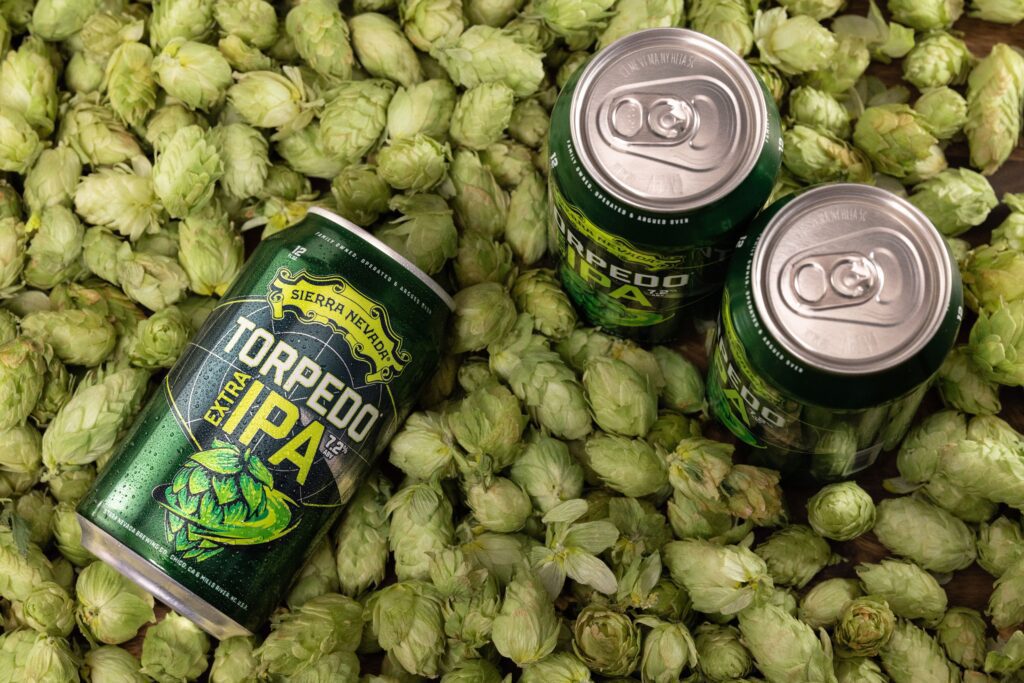
Hazy IPAs, or New England IPAs, go big on “cold side” hops (i.e., added during fermentation) to unleash more aroma and flavor without extra bitterness. You’ll find their fruity hop notes tend to be more tropical and “juicy” than West Coast counterparts—case in point, our Juicy Little Thing Hazy IPA. And there’s a signature mouthfeel to a Hazy IPA, soft and creamy, thanks to a trusty lineup of grains.
And perfectly timed for summer 2025, Peachy Little Thing is a Hazy IPA that drips with juicy flavor from Alora hops—notes of peach, nectarine, and orange. We layer in real fruit character for an extra squeeze, while the 18 IBU from Magnum hops is just enough to balance the sweetness. “It has that initial punch of peaches,” says Isaiah Mangold, our Manager of Innovation, “but as you keep sipping, it has all the complexity you expect from an IPA.”

What makes a Hazy IPA so hazy?
Plenty goes into how Hazy IPAs are made, including extensive dry hopping, but it starts even before we fire up the brew kettle.
Oats and wheat—both malted and unmalted varieties—are critical to Hazy IPA recipes, down to their exact makeup of proteins, beta-glucans, diastatic power, and other beer-nerdy specs. With Hazy Little Thing IPA, this precise grain foundation interacts with the polyphenols (think pre-haze molecules) in colossal volumes of lupulin hop dust, which is basically the pure flavor from inside hop cones, to generate a smooth and juicy haze.
We chill our fermenters at slightly higher temperatures than normal so the haze doesn’t fade, then we skip the filter to package all the hazy flavor in its prime—straight from the tanks and into the can.
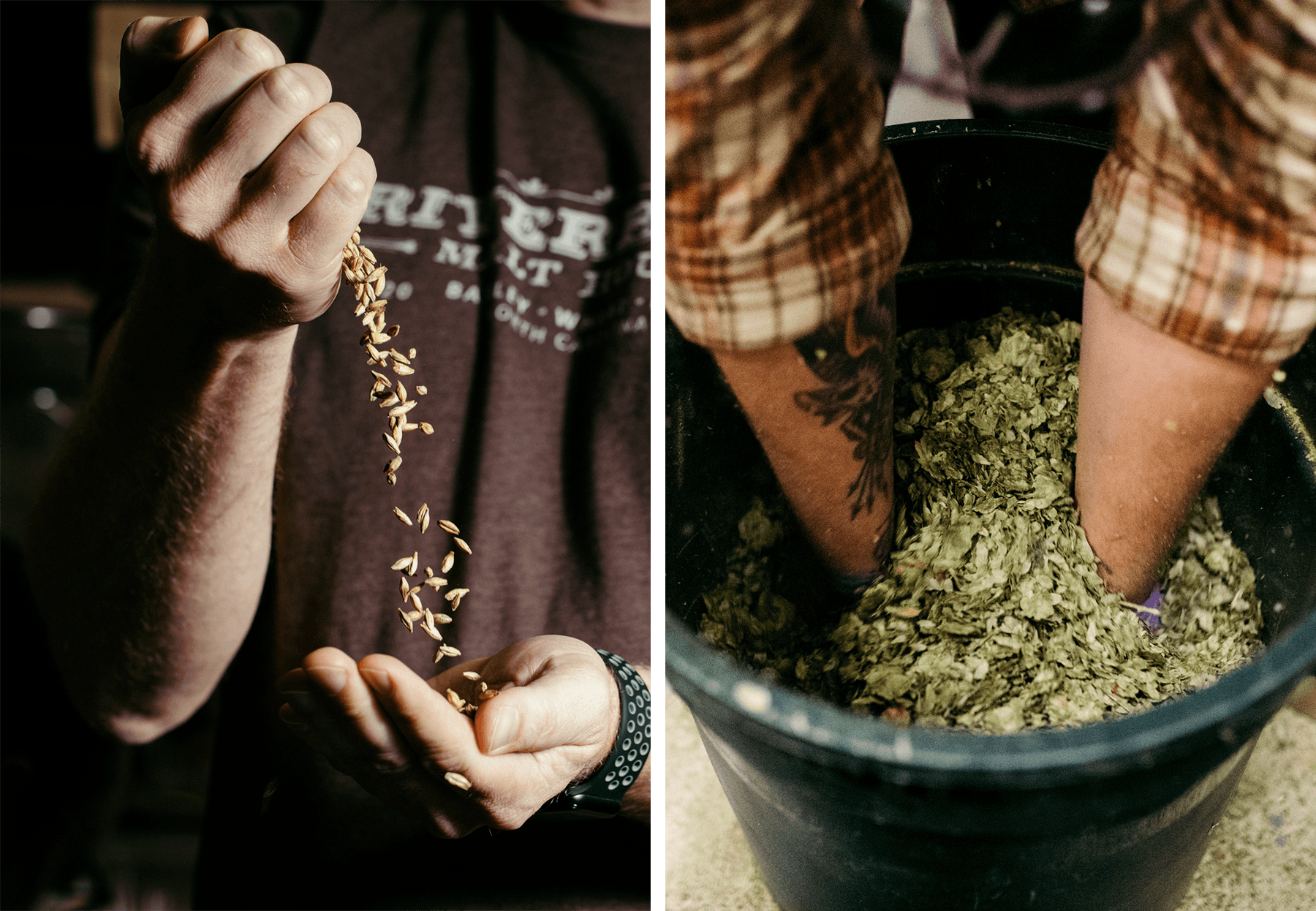
Are Hazy IPAs less hoppy than a standard IPA?
“Hoppy” is a broad term without a clear definition; you might describe it one way, while your buddy has something else in mind. Do you default to bitterness? Is it the intensity of aromas? You just know it when you taste it?
Look at the label on a Hazy IPA beer, or any craft beer for that matter, and you’ll likely see a number for the actual measurement of bitterness, International Bitterness Units (IBU). These units might help answer What is a Craft Beer? by giving a general sense of hoppiness, but IBU can be a tricky stat. Torpedo, for example, is a West Coast IPA, so its 65 IBU does reflect the hop bitterness common to the style. But then you have something like Narwhal Imperial Stout at 60 IBU, which isn’t a hoppy beer by nature; it’s big on malt character, but hops do help balance out the sweetness.
At 35 IBU, Hazy Little Thing IPA is on par with our classic Pale Ale (38 IBU). Yet the perceived bitterness of Pale Ale is higher for most drinkers, while the silky malt and juicy hops in Hazy Little Thing keep bitterness at bay.
Saying Hazy IPAs are less hoppy, then, is a bit subjective. Guess you just have to try them all and decide for yourself.
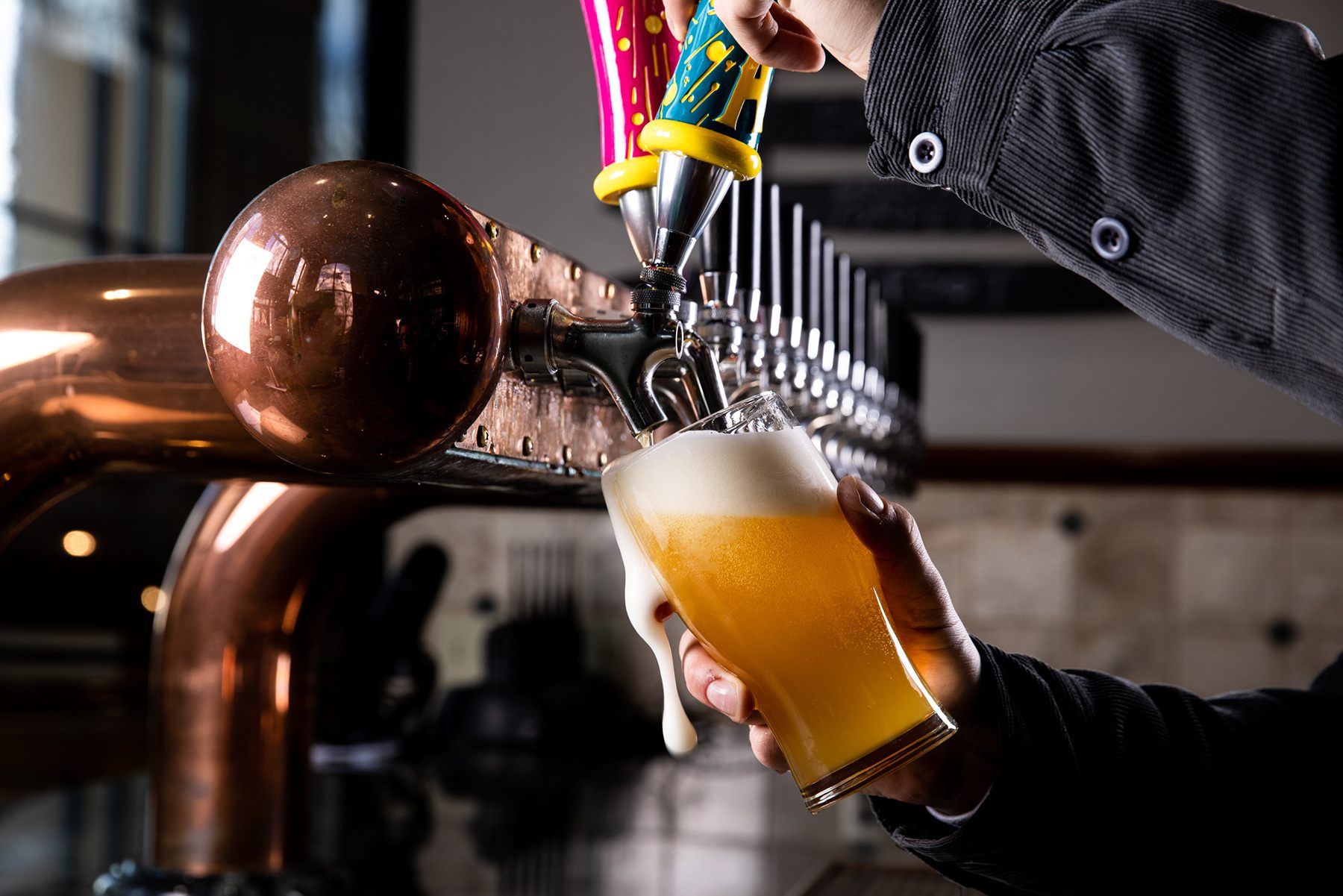
How big is Hazy IPA alcohol content?
Hazy IPAs come in a wide range of alcohol levels, depending on the brewer’s vision for a recipe and the substyle they’re aiming for. Some are light and refreshing, with a sessionable ABV around 4–5%, like our easy-drinking Hoppy Little Thing. Others dial it up to 6–7% ABV for a bolder experience, typical of traditional IPAs. And then there are the heavy hitters—Imperial or Hazy Double IPAs—that push past 8% ABV and bring a hop-saturated punch, like our Cosmic Little Thing.
While their haze is jam-packed with flavor, Hazy IPAs aren’t inherently stronger than other IPAs. Their signature juicy, fruit-forward character comes from how they’re brewed, not necessarily from a higher alcohol content. Brewers fine-tune the ABV to match the experience they want to create, whether it’s a laidback Hazy Little Thing or a towering Big Little Thing that commands your attention.
And if you love the haze but want to drop the alcohol, you’re in luck.

Non-alcoholic Hazy IPAs
Maybe it’s not the right time for a beer. But it’s always time for full craft flavor with our non-alcoholic Trail Pass Hazy IPA. It took 5 years of development to get Trail Pass just right, but our non-alcoholic brews had to taste like beer, period. (And the critics clearly agree.) The juicy flavorscape in Trail Pass Hazy IPA bursts with Mosaic and El Dorado hops. For all its fruity character, dank notes also dial up the complexity of this smooth and balanced hazy. Bonus: we’ll ship it right to your door.
Hazy IPA nutrition facts
The calories in a Hazy IPA, like any craft beer, largely come from carbohydrates and alcohol generated during brewing and fermentation. Early in the brewing process, we mix hot water and grains (a step called mashing) to extract sugars that yeast will devour during fermentation to create, among other things, alcohol. The yeast, though, leave behind some sugars they can’t break down—carbs toward the finished beer.
So the nutrition facts of a Hazy IPA depend on recipe design, namely the target alcohol content and how “fermentable” the grains are, i.e., can the yeast eat everything during fermentation? Hazy Little Thing has 214 calories per 12-ounce can. Swing over to non-alchoholic Trail Pass Hazy IPA, with its trace 0.5% ABV, and that 12-ounce can has a modest 71 calories..
Choose your Hazy IPA
Hazy IPAs are at once distinct, yet it’s pretty clear: You have a lot to explore. Different hops conjure different fruity flavors. Are you looking for a heavy-hitter, or are you keeping things low key? And if calories sway your choice, all of our beer pages include the stats you’re after. No doubt you’ll find a Hazy IPA to love.
Looking for more?
We got you covered. Check out our deep dives on all things beer.
Dry Hopping Sour Beer Non-Alcoholic Brewing




